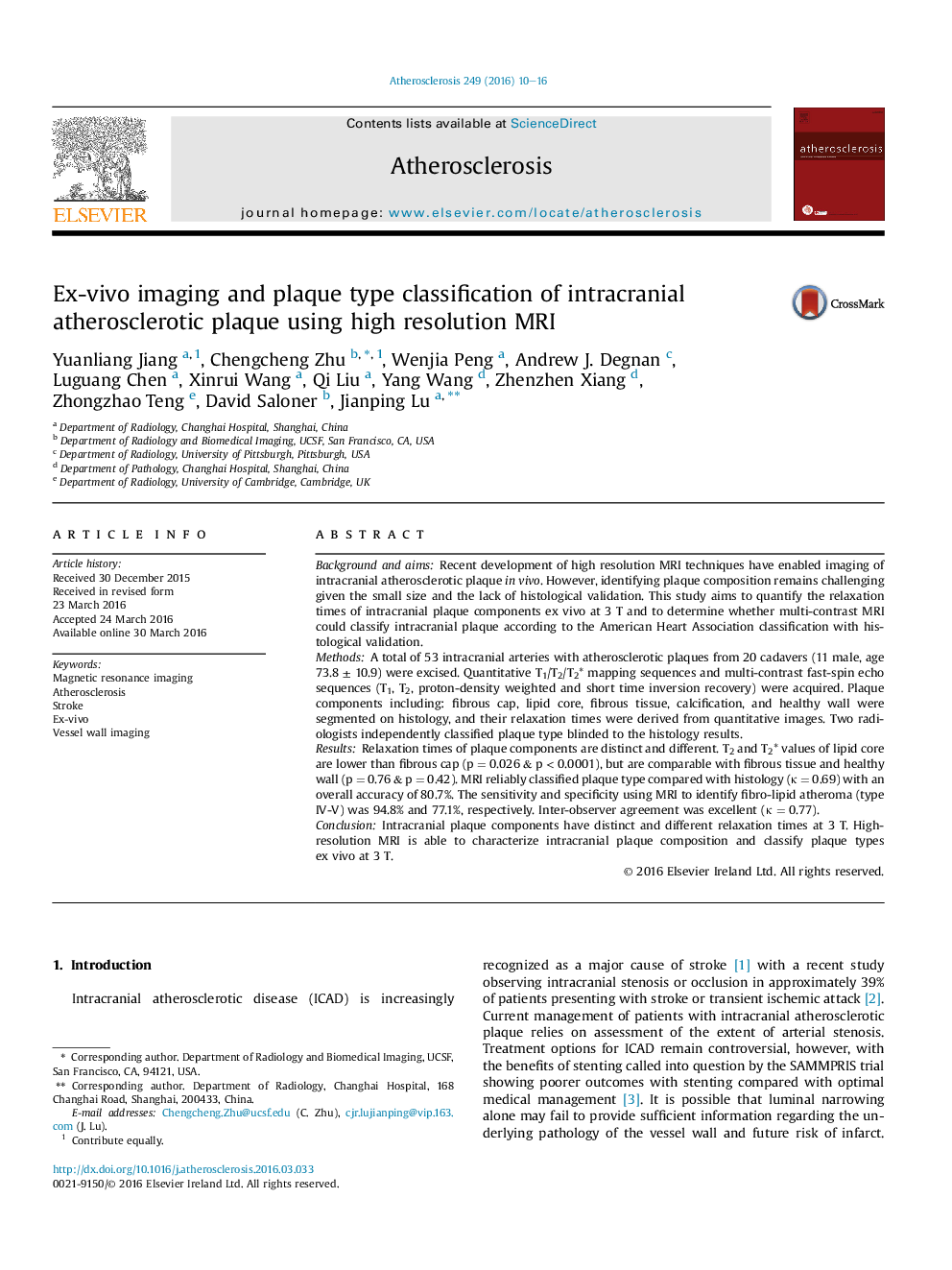| کد مقاله | کد نشریه | سال انتشار | مقاله انگلیسی | نسخه تمام متن |
|---|---|---|---|---|
| 5943195 | 1574716 | 2016 | 7 صفحه PDF | دانلود رایگان |

- Relaxation times of ex-vivo intracranial plaque are firstly reported at 3Â T.
- Intracranial plaque components have distinguished relaxation times at 3Â T.
- 3Â T MRI can classify intracranial plaque type reliably ex-vivo.
- This study provides a basis for in vivo MRI of intracranial plaque at 3 T.
Background and aimsRecent development of high resolution MRI techniques have enabled imaging of intracranial atherosclerotic plaque in vivo. However, identifying plaque composition remains challenging given the small size and the lack of histological validation. This study aims to quantify the relaxation times of intracranial plaque components ex vivo at 3 T and to determine whether multi-contrast MRI could classify intracranial plaque according to the American Heart Association classification with histological validation.MethodsA total of 53 intracranial arteries with atherosclerotic plaques from 20 cadavers (11 male, age 73.8 ± 10.9) were excised. Quantitative T1/T2/T2* mapping sequences and multi-contrast fast-spin echo sequences (T1, T2, proton-density weighted and short time inversion recovery) were acquired. Plaque components including: fibrous cap, lipid core, fibrous tissue, calcification, and healthy wall were segmented on histology, and their relaxation times were derived from quantitative images. Two radiologists independently classified plaque type blinded to the histology results.ResultsRelaxation times of plaque components are distinct and different. T2 and T2* values of lipid core are lower than fibrous cap (p = 0.026 & p < 0.0001), but are comparable with fibrous tissue and healthy wall (p = 0.76 & p = 0.42). MRI reliably classified plaque type compared with histology (κ = 0.69) with an overall accuracy of 80.7%. The sensitivity and specificity using MRI to identify fibro-lipid atheroma (type IV-V) was 94.8% and 77.1%, respectively. Inter-observer agreement was excellent (κ = 0.77).ConclusionIntracranial plaque components have distinct and different relaxation times at 3 T. High-resolution MRI is able to characterize intracranial plaque composition and classify plaque types ex vivo at 3 T.
Journal: Atherosclerosis - Volume 249, June 2016, Pages 10-16